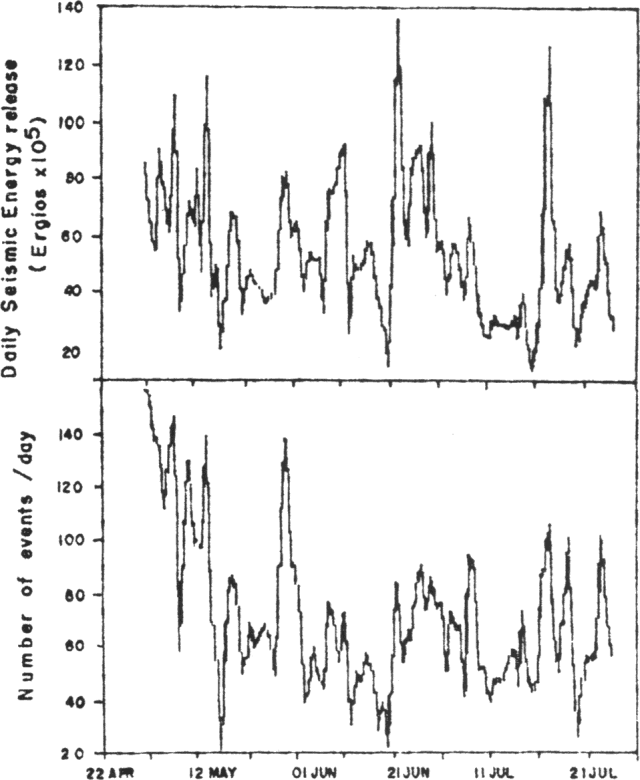Report on Galeras (Colombia) — July 1989
Scientific Event Alert Network Bulletin, vol. 14, no. 7 (July 1989)
Managing Editor: Lindsay McClelland.
Galeras (Colombia) Vigorous fumarolic emission; seismic swarm
Please cite this report as:
Global Volcanism Program, 1989. Report on Galeras (Colombia) (McClelland, L., ed.). Scientific Event Alert Network Bulletin, 14:7. Smithsonian Institution. https://doi.org/10.5479/si.GVP.SEAN198907-351080
Galeras
Colombia
1.22°N, 77.37°W; summit elev. 4276 m
All times are local (unless otherwise noted)
In June and July, fumarolic activity on the SW flank of the central cone increased significantly. A new fumarolic vent (named Las Portillas) opened on the inner W wall of the central crater. The vent was ~2 m in diameter and vigorously emitted gas with temperatures >470°C on 22 July. Both Las Portillas and the 10-m-wide La Chava vent emitted superheated gases, producing a loud noise. During the last two weeks in July, numerous small fumarolic fractures on the S rim of the crater, and small radial and concentric fractures on the W crater rim, were observed.
Seismic activity during June and July was nearly stable (figure 3), except for a slight decline (20%) in the daily average of B-type events between mid-May and the last week of July. The seismic energy release associated with B-type events was also stable. The number of A-type events was low until 23 July when a swarm of 30 earthquakes occurred between 0811 and 1500, including a M 3 event at 1233. The swarm was centered about 2 km W of the crater, at 1-7.5 km depth (figure 4). The number of low-frequency events had increased slightly before the swarm. Dry tilt showed no significant changes, although electronic tilt varied slightly on the 21st (figure 5). SO2 emissions increased slightly with an average of 600 t/d in July (see figure 12).
 |
Figure 3. Daily seismic energy release (top) and number of events (bottom) at Galeras, 22 April-31 July. Courtesy of the Observatorio Vulcanológico de Colombia. |
 |
Figure 4. Map showing epicenters (top) and an E-W cross-section (bottom) of seismic events at Galeras in July. Courtesy of the Observatorio Vulcanológico de Colombia. |
Geological Summary. Galeras, a stratovolcano with a large breached caldera located immediately west of the city of Pasto, is one of Colombia's most frequently active volcanoes. The dominantly andesitic complex has been active for more than 1 million years, and two major caldera collapse eruptions took place during the late Pleistocene. Long-term extensive hydrothermal alteration has contributed to large-scale edifice collapse on at least three occasions, producing debris avalanches that swept to the west and left a large open caldera inside which the modern cone has been constructed. Major explosive eruptions since the mid-Holocene have produced widespread tephra deposits and pyroclastic flows that swept all but the southern flanks. A central cone slightly lower than the caldera rim has been the site of numerous small-to-moderate eruptions since the time of the Spanish conquistadors.
Information Contacts: INGEOMINAS, Pasto.


